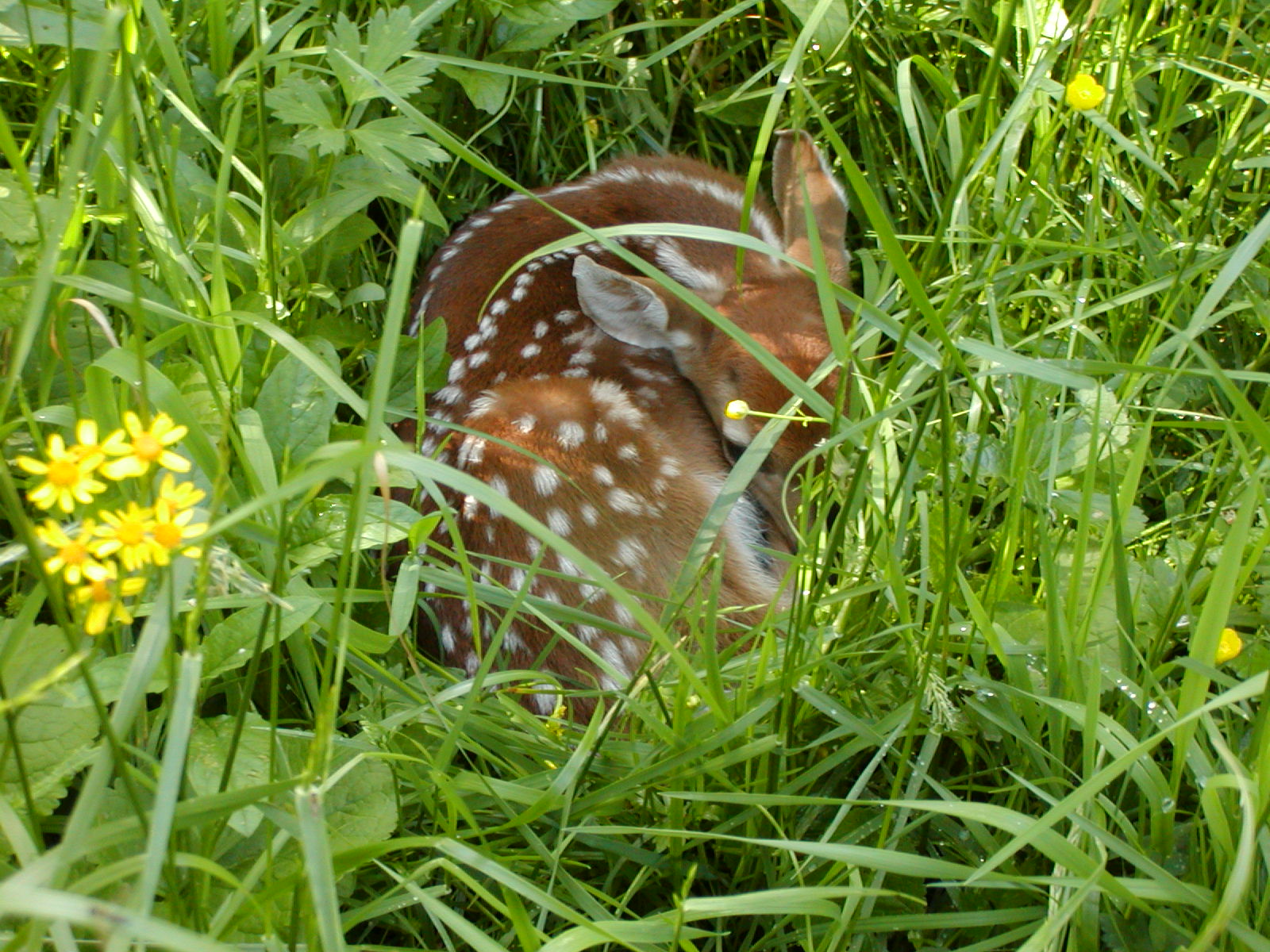It’s that time of year again. Fawns are dropping across the country and people are running across these baby deer. While a new fawn may appear helpless, it is important to stay away and not interfere with the doe’s natural instinct for raising its young.
A doe’s method of raising its young is different from a human’s, especially for the first few weeks. Within hours of birth, the fawn is led to a secluded spot and the doe lets it nurse.
With a full stomach, the fawn is content to lie down and rest. If the doe has twins, it will hide the second fawn up to 200 feet away. Then the doe leaves to feed and rest herself, out of sight but within earshot. In four or five hours, she will return to feed her young and take them to a new hiding place. They follow this pattern for two to three weeks, and only then, when the fawns are strong enough to outrun predators, do the young travel much with their mother.
Deer have multiple special adaptations that make this approach to fawn rearing successful. Fawns have almost no odor, so predators cannot smell them. Their white spotted coats provide excellent camouflage when they are lying on the forest floor. For the first week of life, frightened fawns instinctively freeze, making full use of their protective coloration.
Older fawns remain motionless until they think they have been discovered, and then jump and bound away. A deer’s primary protection from predators is its great speed. Newborn fawns are not fast enough to outrun predators, so they must depend on their ability to hide for protection. According to John Ozoga’s “Whitetail Intrigue: Scientific Insights for White-tailed Deer Hunters,” defending fawns against predators requires a lot of energy and risks injury or death, therefore the healthiest does are the most aggressive in protecting their young from danger. The health of the fawn is also is a factor in maternal defenses. In twin fawns, the mother will sometimes defend the larger sibling more aggressively than the smaller one.
Although these adaptations work well against predators, they don’t work very well with people. For the first few weeks, a fawn’s curiosity may entice it to approach a person who comes upon it.
What’s the right way to handle a fawn encounter? Never try to catch it. If it’s hiding, admire it for a moment and then quietly walk away. Enjoy the memory, but don’t describe the location to others. If the fawn tries to follow, gently push on its shoulders until it lies down, and then walk away. That’s what its mother does when she doesn’t want the fawn to follow. Leaving fawns alone gives them the best chance for survival. Even most orphaned fawns are best suited to survive without human intervention. According to the Wisconsin DNR, if a fawn is in an unsafe location, such as near a roadway, it’s okay to move the fawn back from the road several yards. Wear gloves and a face mask to protect the health of the fawn and use caution when walking near a road. The mother will find the fawn. Although you should avoid touching the fawn unless absolutely necessary, it is a myth that the mother will reject the fawn if it has human scent on it.
Never feed or place a collar on a fawn or other wild animal. Collaring a wild animal sets it apart from others and increases the likelihood for harm to the animal. Collared wild animals are not protected from hunting or animal control activities by law enforcement.
Conditioning any wild animal to seek human-provided food will cause them to stop seeking their natural food sources. Feeding deer can be especially problematic because it encourages the transmission of animal disease such as chronic wasting disease (CWD). CWD can be spread through saliva when multiple deer eat from the same food source – such as feeders or piles of feed left on the ground. Feeding deer can concentrate animals in feeding areas, which makes them more susceptible to predation, vehicle collisions or other unwanted human interactions. What begins as a good intention to help the animal, ultimately promotes disease and lessens the animal’s ability to survive independently.
Not all animals survive, and some mortality is a natural occurrence. For more information about an interacting with a wild animal, contact a local DNR area wildlife office for suggestions. In most cases, letting nature take its course is the best advice.


